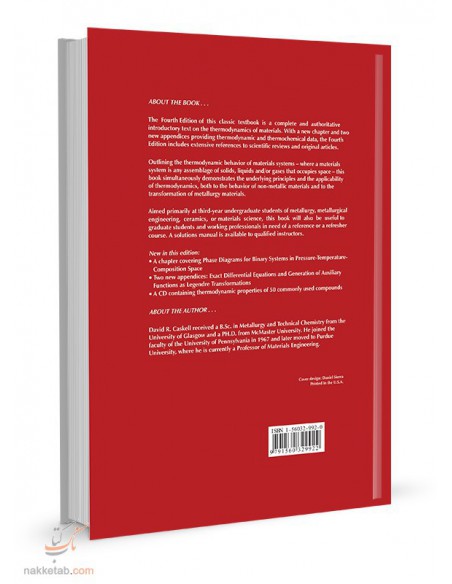- Thermodynamics Of Materials Pdf Key Clever Solutions
- Introduction To The Thermodynamics Of Materials Pdf
| Thermodynamics | |||||||||||||||||||||
|---|---|---|---|---|---|---|---|---|---|---|---|---|---|---|---|---|---|---|---|---|---|
| |||||||||||||||||||||
| |||||||||||||||||||||
| |||||||||||||||||||||
| |||||||||||||||||||||
| |||||||||||||||||||||
|
The thermodynamic properties of materials are intensive thermodynamic parameters which are specific to a given material. Each is directly related to a second order differential of a thermodynamic potential. Examples for a simple 1-component system are:
- Compressibility (or its inverse, the bulk modulus)
Thermodynamics in the material sciences and related areas, with contributions from Estonia, Russia, China, Poland, Germany, Hungary, USA and Canada. Thus we have presentations dealing with. Thermodynamics is the branch of science concerned with heat and temperature and their relation to energy and work. Being concentrated on a wide range of applications of thermodynamics, this book gathers a series of contributions by the finest scientists in the world, gathered in an orderly manner. The thermodynamic properties of materials are intensive thermodynamic parameters which are specific to a given material. Each is directly related to a second order differential of a thermodynamic potential. Examples for a simple 1-component system are. 'Thermodynamics of Materials' introduces the basic underlying principles of thermodynamics as well as their applicability to the behavior of all classes of materials, while providing an integrated approach from macro- (or classical) thermodynamics to meso- and nanothermodynamics, and microscopic (or statistical) thermodynamics. 34 Full PDFs related to this paper. Introduction to the Thermodynamics of Materials.
- Isothermal compressibility

- Adiabatic compressibility
- Specific heat (Note - the extensive analog is the heat capacity)
- Specific heat at constant pressure
Thermodynamics Of Materials Pdf Key Clever Solutions
- Specific heat at constant volume
- Coefficient of thermal expansion
where P is pressure, V is volume, T is temperature, S is entropy, and N is the number of particles.
For a single component system, only three second derivatives are needed in order to derive all others, and so only three material properties are needed to derive all others. For a single component system, the 'standard' three parameters are the isothermal compressibility , the specific heat at constant pressure , and the coefficient of thermal expansion .
For example, the following equations are true:
The three 'standard' properties are in fact the three possible second derivatives of the Gibbs free energy with respect to temperature and pressure.
See also[edit]

- Specific heat of melting (Enthalpy of fusion)
- Specific heat of vaporization (Enthalpy of vaporization)
External links[edit]
- The Dortmund Data Bank is a factual data bank for thermodynamic and thermophysical data.
References[edit]
Introduction To The Thermodynamics Of Materials Pdf
- Callen, Herbert B. (1985). Thermodynamics and an Introduction to Thermostatistics (2nd ed.). New York: John Wiley & Sons. ISBN0-471-86256-8.
